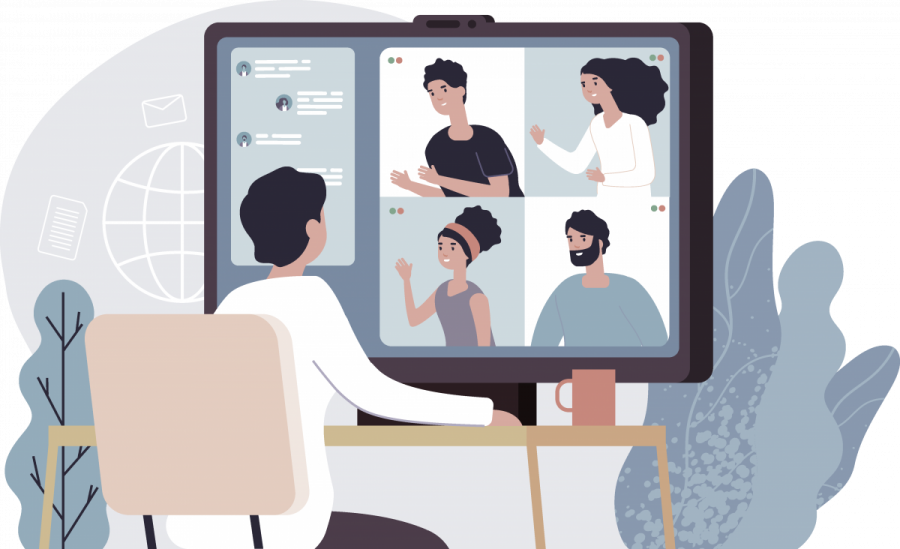I’m a million-mile flier with one of the big airlines, and that’s a bittersweet thing to say. The sweetness comes from memories of people and experiences all over the world, but bitterness rises when I think of the carbon footprint of those travels. Most of that flying took place during my previous career as a professional astronomer. Now that my research deals with the effects of rising CO2, abundant travel really doesn’t sit right.
As a SESYNC postdoc I’m working on a new project examining how elevated atmospheric CO2 appears to be lowering the nitrogen (i.e., protein) content of plants. This phenomenon has been linked to declines in the populations of certain insects, could be slowing the growth of grazing livestock, and may threaten human nutrition as well. Though our team-based research project, or Pursuit, is in its early stages, it seems likely that this reduction in plant nutritional quality is yet another reason to get CO2 emissions down as soon as possible.

With this in mind, then, the current global outbreak of sickness and hardship and isolation has been…a sort of opportunity? By this, I mean an opportunity to learn to lower the carbon footprint of our research by using technology, not travel, to connect us.
Our Pursuit’s first meeting was scheduled for 2.5 days in mid-April in Annapolis, but by early March, it was clear that people wouldn’t be traveling to SESYNC. Instead, we opted for a shorter meeting to be held by video. I had serious feelings of impending doom brought on by this arrangement. Without all the benefits of face-to-face interaction, a lot of my thoughts before the meeting were along the lines of: Will this be really awkward? How on earth will we converge on a research plan? In fact, will anyone even show up? How can we contemplate doing science when people are dying and losing their jobs?
Well, now that the workshop is over, I want to reassure you that it all went fine and that virtual collaboration meetings are actually not very scary. Everyone showed up, everyone seemed curious about what the others had to say, and moments like the child of a participant practicing the violin in the background just seemed like a sweet personal touch rather than an interruption. I’m happy to say that we have a research plan (a little rough around the edges, but still a really solid start), and that’s a good thing because the problems we’re working on will still be with us long after the current crisis has abated.
So, if you’re in a similar situation, and a little uneasy about virtual meetings, here are just a few suggestions that you might find helpful:
- People are pretty good at virtual meetings by this point, so don’t worry too much about not being able to connect with others. In fact, the days of starting every meeting with a frantic “CAN YOU HEAR ME NOW?” will soon be behind us. Obviously, know your conferencing system and have a backup or technical support available if you can, but don’t lose too much sleep over this.1
- There are many resources out there to help with hosting online workshops, and SESYNC has a set that is tailored towards interdisciplinary teamwork in a virtual world. If you’re eligible to take advantage of SESYNC’s personalized support, you should absolutely do that. Just give yourself plenty of time, a few weeks if you can, to absorb and implement their suggestions before your meeting gets underway.
- If you don’t know your team members well already, schedule some one-on-one calls ahead of your workshop. That way you can learn more about both their research interests and their personalities, and perhaps get some insight into who might benefit from being actively drawn into the conversation when the whole group gets together.
- Set realistic expectations, take regular breaks, and don’t try to do too much. We had originally planned a 2.5-day in-person workshop, and we replaced this with two virtual sessions of a few hours each. Clearly, we’re not as far along as we probably would be otherwise, but we’ll keep the momentum going with regular 2-3-hour meetings over the next few months.
- Recognize that, in an interdisciplinary meeting, there will be times when you don’t understand what people are talking about and you’re not sure whether it’s a good idea to try to steer the conversation. For us, it helped that we had two co-leaders. We used the Zoom chat to send each other messages like “I think we need to refocus but I don’t know what to say—can you help?” and to swap duties like notetaking and timekeeping.
- Give people the benefit of the doubt and realize that they will usually do the same in return. It doesn’t all have to go perfectly—people (and, I believe, especially people who really want to do team science) are capable of being generous. Honestly, I think you just have to dive in and get the job done. It’ll be easier than you think.
I do hope our team will meet face-to-face before too long, and I hope that in-person conferences are still in everyone’s future, as well (I’ll be looking into train, bus, and car-sharing arrangements for those). But virtual meetings seem like a perfectly viable option now, and I’ll definitely give them serious consideration rather than defaulting to travel in the future. Actually, it will be kind of weird to be surrounded by 3-D humans again. Oh great, looks like I’ve just identified the next thing to worry about…
1 Of course, this assumes that everyone has a good internet connection, which isn’t always the case outside of well-resourced institutions and neighborhoods, but that’s a different conversation.